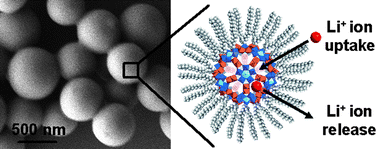Self-assembly and ion-trapping properties of inorganic nanocapsule-surfactant hybrid spheres†
Abstract
Spherical hybrid assemblies based on cationic

* Corresponding authors
a
State Key Laboratory of Supramolecular Structure and Materials, College of Chemistry, Jilin University, Changchun 130012, China
E-mail:
wulx@jlu.edu.cn
b Key Laboratory of Natural Resources of Changbai Mountain & Functional Molecules of Ministry of Education, Yanbian University, Yanji 133002, P. R. China
Spherical hybrid assemblies based on cationic

 Please wait while we load your content...
Something went wrong. Try again?
Please wait while we load your content...
Something went wrong. Try again?
H. Li, Y. Yang, Y. Wang, C. Wang, W. Li and L. Wu, Soft Matter, 2011, 7, 2668 DOI: 10.1039/C0SM01044H
To request permission to reproduce material from this article, please go to the Copyright Clearance Center request page.
If you are an author contributing to an RSC publication, you do not need to request permission provided correct acknowledgement is given.
If you are the author of this article, you do not need to request permission to reproduce figures and diagrams provided correct acknowledgement is given. If you want to reproduce the whole article in a third-party publication (excluding your thesis/dissertation for which permission is not required) please go to the Copyright Clearance Center request page.
Read more about how to correctly acknowledge RSC content.
 Fetching data from CrossRef.
Fetching data from CrossRef.
This may take some time to load.
Loading related content
